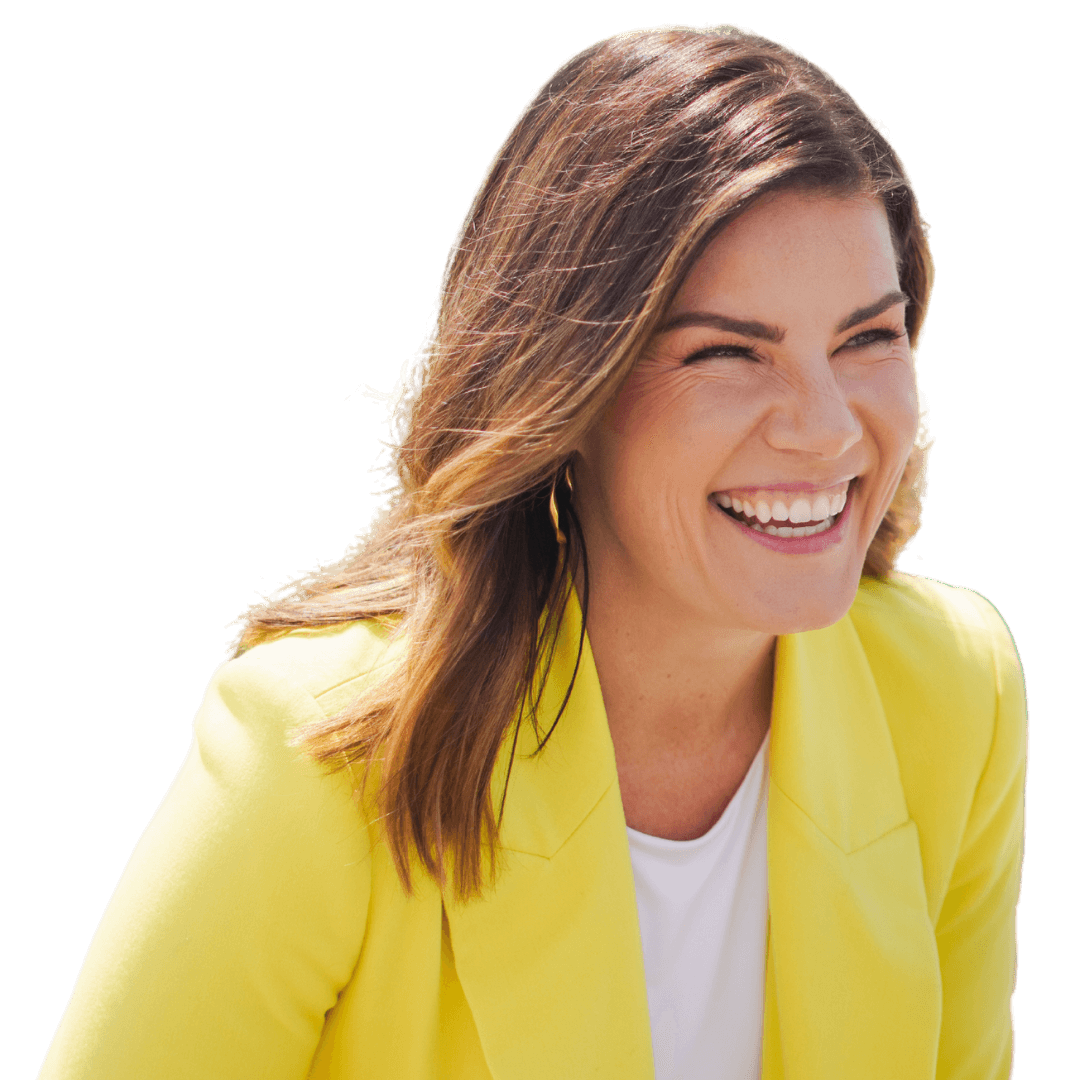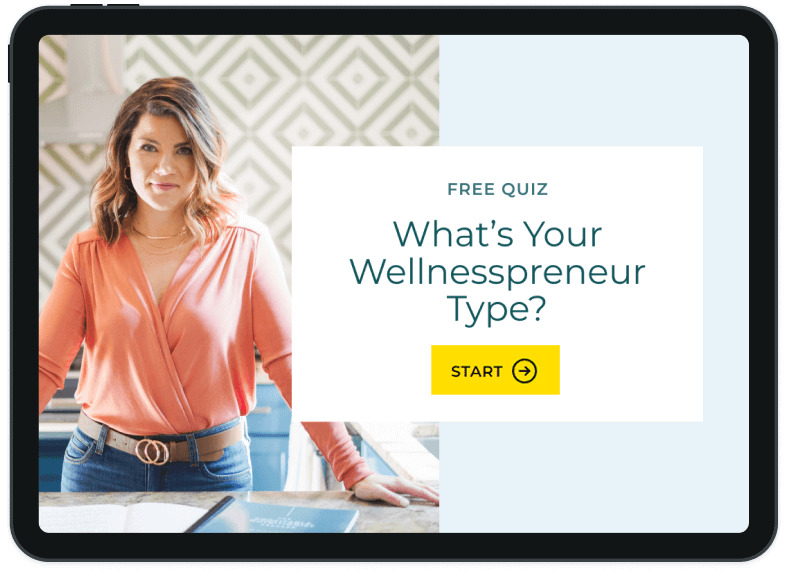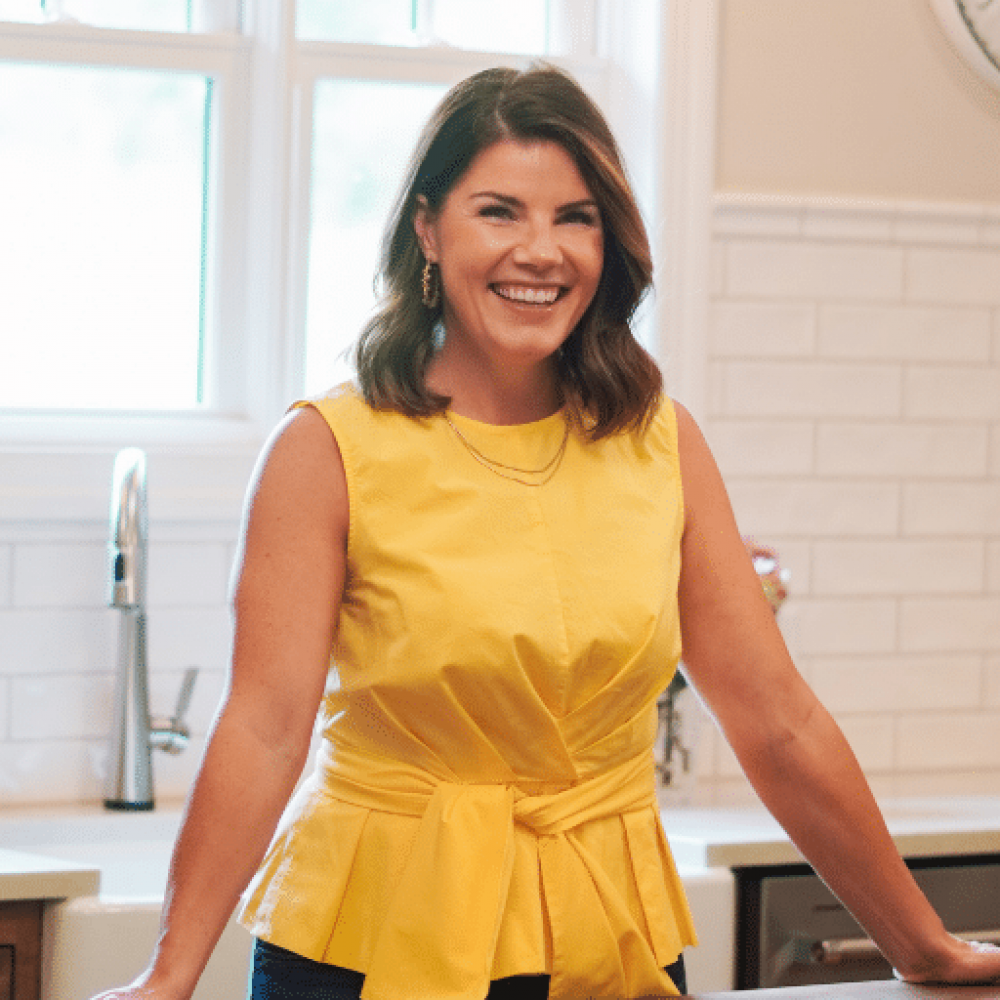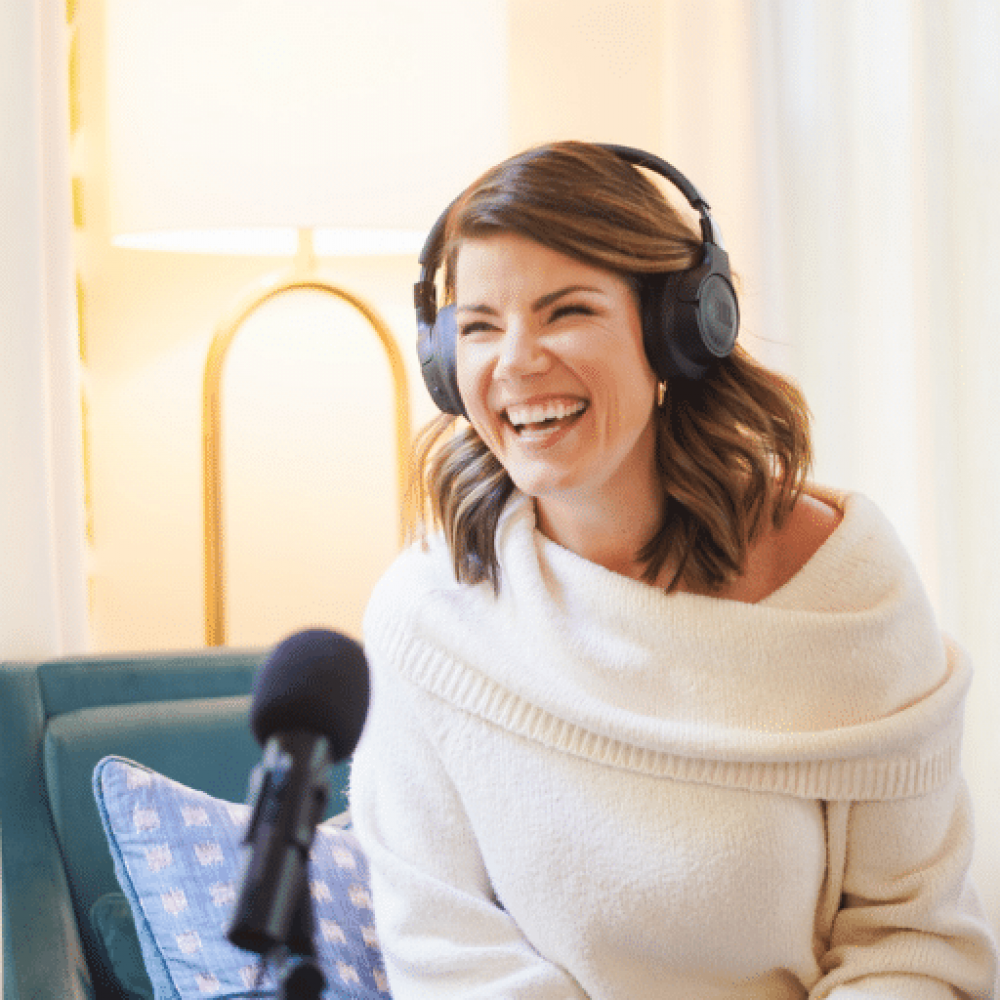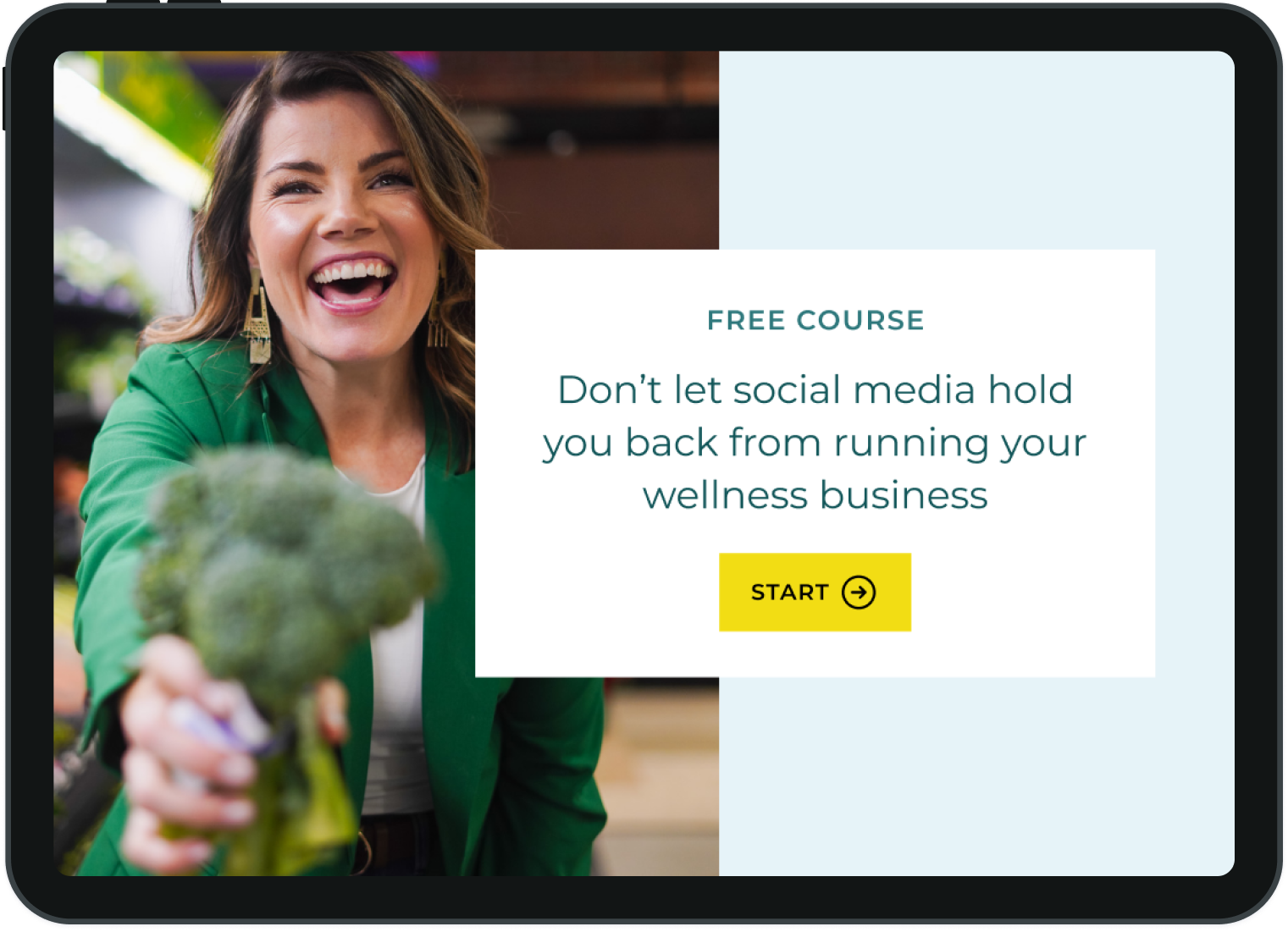Andrea Nordling 0:00
Welcome to an Ask me anything. Podcast edition on the profitable nutritionist podcast. My name is Andrea Nordling. I’m a founder of the profitable nutritionist and nutritional therapy practitioner. Myself here to answer all of your burning questions regarding growing, scaling and optimizing your nutrition or holistic wellness business, starting with answering your questions directly. So that’s what you’re going to get in this episode is a mashup of me doing ama videos answer quickfire answers to your questions. And if you are not already there, I’m going to direct you to the profitable nutritionist email list, which is where we send out these ama videos every single month in response to your questions. So if you’re not already getting the profitable nutritionist emails, you have to do that. Go to the profitablenutritionist.com and sign up somewhere on the website to receive something via email, which means we will then send you these emails. If you would like to submit a question to be answered on a future Ask Me Anything, video or podcast episode, you can head over to the profitable nutritionist.com/ask and submit your question again. That’s the profitable nutritionist.com/ask All right, here we go. All right. Question is, when do you move from one on one to group coaching? Can you do a group coaching offer if you haven’t worked with that many clients yet, all right, two answers to this. There’s always two answers. There’s always more than one, because really, there’s no one way to do it. So I’m going to tell you the hard way. I’m going to tell you the easy way. It’ll be no shock to you, if you’ve been around here any length of time that I did this the hard way. So first of all, of course, you can, you can start a group without ever working with any one on one clients. That is the rule breaking way. Okay, rules are meant to be broken.
Speaker 1 1:44
I did this. This is what I did. I went straight to group because I
Andrea Nordling 1:48
didn’t know that I could make the kind of money that I wanted to with one on ones. So I did work with some one on ones at the beginning. And it was also trying to do groups, and it was launching online courses and a membership. And I did all of the things at once for the first few years of my business, because I didn’t know that there was a better way. I didn’t I truly didn’t have any one path and one process that I was following. I was trying to piece together all kinds of different strategies which made this way way harder than it need to be. I didn’t know that I could make the kind of money that I wanted to make with one on ones. Now I know coaches who make over a million dollars a year just with one on ones, so it’s absolutely possible. I did not know that that was possible. I’ll just be totally honest, I didn’t know honest, I didn’t know what I didn’t know. So I made the decision to go straight into group because, or almost straight into group, I only worked with a few, one on ones, because that’s what I thought I had to do to make the kind of money that I wanted to make. That’s the hard way, for sure, the hard way, but you can do it. I put good example. You can do it. And what I teach in my programs will help you do that. But what I would suggest doing, I think, is much easier for two reasons, and I’ll explain it is to start with one on ones and then transition to group. Reason for that is you’re going to have your process and your messaging so much more dialed in if you start with one on ones. It’s a different skill set to sell someone one on one than it is to sell a group. I think it might be a fact that it’s easier to sell one on one. I don’t want to plant the seed that is hard to hard to sell a group or sell one to many, but it is, for sure, it’s a different skill set, and I do think it’s easier to sell in one on one conversation. So in the beginning, I would highly suggest that you are doing it that way, and then for the same reason, you are delivering your process one on one, because then you are so much more agile, you are able to tweak, and you were able to change, and you are able to get the feedback from the person, whether it’s in the sales, that one on one sales conversation that you’re having, or in the one on one delivery of your process to your clients, you’re able to move like you’re flexible. You can see, oh, okay, that wasn’t landing the way I thought it was going to. I’m going to change that for next time. Or this is taking longer than I thought it was going to take in the process for them to understand this. I need to stretch it out further than I thought it was going to or on a consult call or discovery call with someone, you can hear what their exact objections are and where they’re getting stuck and where you think they understand something, and really they have no idea what it is. So in real time, you’re getting your messaging so much more dialed in and figured out, and in real time, and then you’re making money while you’re at it, and in the meantime, you are honing your process, and you’re figuring out, how does this work the best? How could I make it simpler? And you’re doing it in real time with people that are helping you to make it simpler and make it more efficient along the way, and you’re getting paid to do that. So my suggestion is to work with one on ones first. For that reason, you don’t have to, you don’t have to take my advice on this. I didn’t take my own advice on it for the reason I already told you, and many of my clients also just go straight to group and it’s fine. However, what you end up doing is changing your process a lot, because all of the iterating that you would do with your one on ones in the beginning, while you’re figuring out your processes and you’re figuring out your messaging, and you’re figuring out the exact clients you want to work with and who it works best for all of the trial and error that you’d be doing one on one in the beginning, you’re now doing with the group, and you’re changing and you’re changing and you’re changing and it’s just, uh, like, it’s like steering a ship, like it’s just, it’s harder to steal the ship than the little, little boat, or whatever. However, that would make sense to say. So for that reason, I would suggest doing one on ones. The second reason I would. Just is because, like I said, it is a more advanced skill set to fill a group, in my opinion. But I think that might not just be my opinion. I think that just might be true, because you have to have a lot of demand built up for your group before you go launch it, to get enough people in that are ready to start all at the same time. When you’re launching a group program, you have a start date and an end date, and you need to get everybody to make a decision and get ready before the start of the group. And that is possible. I do that many businesses do that. Many of my students do that. However, it is a more advanced skill set to sell that way and to get everybody ready to go by the date that you need them to be ready to go for, whereas with one on ones, people can be trickling in, and it’s just much less pressure on the filling it and launching the group. So what I would suggest is working with one on ones, building up that demand, have a lot of people interested, have a lot of sales conversations, make a lot of offers to people, and know that by the time you’re going to launch that group, that you have a wait list of people, or you have a group of people that are already chomping at the bit to work with you, that are going to want to jump into the group. That’s my suggestion. But that being said, rules are meant to be broken. Like I said, I’m a good example of it, and there are plenty of people in my programs also that go straight to groups. So we can do it either way. But I think working with one on ones first is the easier way for a lot of reasons. Another really good question here about corporate wellness. So the question is, Do you have experience with or resources for selling to organizations as clients, as opposed to individuals, for example, a business or university who pays a large package fee for a certain number of its employees and or students to participate in a program? Such a good question. This is a very, very easy answer. Everything that I talk about, about selling and making offers applies to corporate wellness. It’s just a different client. So corporate wellness is B to B. We call this B to B, which is business to business, your business selling to another business. And it is the same process as selling B to C, which is your business selling to clients, B to C, B to B, the same as B to C for you, except you just need to realize that your client is actually the corporation. So you’re solving a pain point and delivering results for that client, which is the corporation, not to the individuals. Now this is a little bit confusing, because the way that you are delivering results to the corporation is delivering results to the individuals who you are helping to improve their health. So we know that that is true, but the marketing and the selling is actually solving a pain point for the corporation, for the business, B to B, this is the businesses problems that you are solving now. A problem that they have is that their employees are unwell, or their employees are spending more on health care that they need to be, or they’re not as productive as they could be if they felt better. Whatever that business’s problems are you’re solving, but you are talking to that company in terms of those problems, all right. So your process is to work with their employees, but you are selling and solving the problems of the corporation. So you are creating results for the corporation when the people that you work with are getting the results. Does that make sense? Just a little bit different strategy, a little bit thinking, because you will probably want to speak to how you’re going to drastically improve the lives of their employees. And that’s great, and that’s part of it, but you really need to be talking to this corporation in terms of, are they going to have increased productivity from those employees? Are they going to have a higher satisfaction in the workplace from those employees? Are they going to have a reduction in health care costs and insurance from those employees. Are they going to make more money because their employees are healthier? What is actually happening in this company when they hire you to work with their employees through a corporate wellness initiative? Okay? Hopefully that makes sense. Yes, there are students in the profitable nutritionist program that do corporate wellness instead of working directly, B to C with clients. This is something people do all the time. We talk about it all the time. I would say, get yourself established on LinkedIn. If you are looking for how to get a leg up in corporate wellness, being a thought leader on LinkedIn meaning having a professional profile there that people can go check out in addition to your website, will be really helpful, because there you can have people doing recommendations directly on LinkedIn that you’ve worked with before, and that lends credibility. If this is something that you’re going to continue to do, you want businesses to see that you’ve worked with other businesses like theirs before. And if you are just getting started with it, you don’t have to start with that, but know that that’s what you’re working towards, to just establish yourself as an authority and to direct more of your leads to if that’s the route that you’re going to take, but it’s totally the same everything I teach about knowing the problems that they have and the solution you offer and the results they really want, all of that applies. It’s just the results for the corporation that you are selling. This is such a good question. You talk a lot about scaling your business and planning for the future, but what if I actually like my business being small? Is that okay? I’m just starting, but I only want it to be part time and to have enough time with each client, one on one, to enjoy it and not feel stressed. I do have income goals, but I think that that can be met with this small type of business. All right, that’s the question answer. Of course, it’s your business. You get to decide what you’re trying. Business looks like, how many clients you want to work with, what your schedule looks like, all of the options. It’s yours to decide. You decide what your dream is. It’s very simple for us to work backwards and then create that for you. So yes, 1,000% yes. But have you considered that the two things are not mutually exclusive? Have you considered that it’s possible to have a full time business or a part time business, you get to decide and to also have enough time with each client and not be stressed about your business while still letting it grow. Because has that has the overlap in the Venn diagram ever occurred? Because I find, for a lot of my clients that it hasn’t, and this is something that I coach on in my programs. Sometimes this thought of, I want it to be intimate. I want it to be very high. Touch can be useful, but other times, what that is really saying is I don’t want this to get too big. I don’t want this to hurt my health. I don’t want this to become my whole life. I don’t want this to take away from my family time. I don’t know how to grow a big business, and I don’t I’m uncomfortable with thinking about what that would could be like. So I’m using this. I want it to be small. I want it to be intimate. I want it to be, however, against myself. So I just would question, what are the reasons that you think that you can’t have both or let it grow? And maybe, is it if you don’t trust yourself to let it get bigger or let it grow without having a cap of some sort, because you think it’s going to impact your health, or you think it’s going to impact your relationships or something else, I would just explore what the reasons for that might be, and that’s what I would get coaching on if you’re in the program. Or what I would explore a little bit for yourself, is just what is that? And is there a way to think about making a big impact and making whatever income I want to make, while protecting whatever that is. So there’s something interesting to explore, because I think it can be and in both always.
